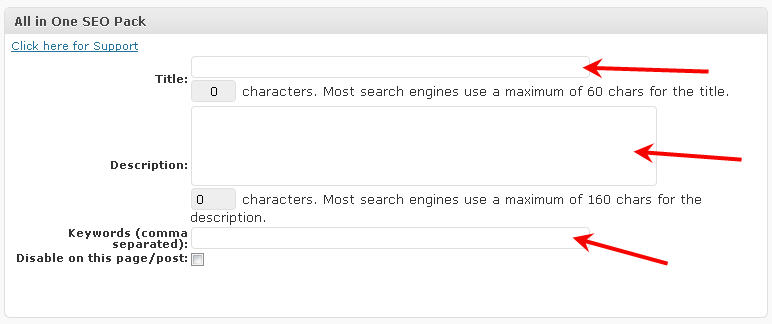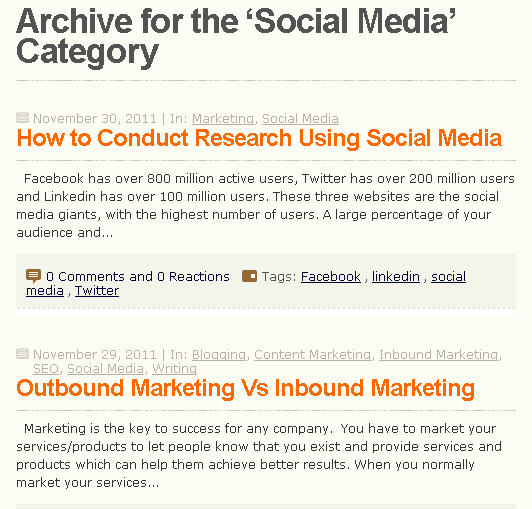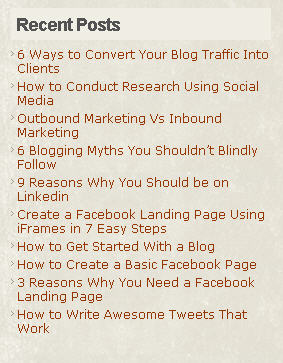Blogging can be a great way to spread knowledge and generate traffic to your websites. Blogging helps display your expertise and generate leads. Another advantage of running a blog is that it’s SEO friendly. Search engines normally give priority to websites which are updated on a regular basis. This could be either editing your content or adding new content. This gives blogs, which are updated on a r
egular basis, an opportunity to stand out in search engines and attract a lot of traffic. This traffic can be used to generate leads, increase ad revenue, etc.
It doesn’t mean that if you start a blog, you will automatically attract a lot of traffic. It doesn’t work that way. You need to make an extra effort to get good backlinks and write keyword rich content. In this post I am going to cover the key to SEO the content on your blog. I will write about backlinks in another post.
So let’s get started – Below you have 7 Ways to SEO the content on your blog.
1. Write SEO Rich content:
The content you write needs to have the right percentage of keywords. Normally a percentage of 2% to 6% is sufficient for SEO. If you go above or below it, your SEO content will not work. If you go above this percentage – search engines will label your blog as spam and abandon it and if you go below this percentage – your content will not be powerful enough. So make sure you use sufficient amount of keywords at regular intervals. For e.g. the keyword for this post is SEO the Content on your blog. I have made it a point to repeat this phrase at regular intervals.
The first thing you need to do is research the keyword using a tool like adwords. After you have performed the research, you can take a look at the most commonly typed keywords and the least competed words and optimize your content according to right keywords, you would like to compete with.
2. Use Keywords in Special Places:
There are certain places in the content where your keywords work best. If you place your keywords at these places your content will be able to perform well. Some of the best places to use keywords are the title, the first line or first paragraph, somewhere in the middle and in the last line. You could also use it in a sub headline which has been made bold. As content that has been made bold can stand out and attract search engines. You might want to hire a good agency that offers white label SEO reports, especially for content creation as this can make it easy to optimize your content for SEO. Tools like Clearscope can also help with content optimization.
3. Adjust metadata:
Metadata plays another key role in SEO. You need to make sure you include keywords in the meta-title and the meta-description. As search engines scan meta-data too. An easy way to add meta-data in wordpress is to use a plugin like All in One SEO Pack – Using this plugin you can add the meta-title, description and any keywords and make it easy for your post or page to be found by search engines.

4. Add links:
Add links to the keywords in your posts. Keywords in links normally stand out. The links could lead to a post on your blog or another blog. One plugin called the yet another related post for wordpress, automatically finds related posts and displays them at the end of each post. This automatically adds keywords to each post.
For e.g. take a look at the related posts I got for a post on my other blog – The White Paper Blog
5. Add categories and tags:
Add categories that relate to your niche and field. Categories appear as links on your pages and when indexed they help in SEO your content. Also categories by themselves act as pages and appear in the URL and when this page is indexed, it will appear in search.
For e.g. one of the key topics discussed on our website Social Marketing Writing is Social Media and we have got a category for it.
When you click on the category, it leads to the page. As you can see in the image the URL has the word Social Media in it and plays an important role in SEO.

Another important factor about adding categories is that it makes it easier to find posts.

Tagging your posts has the same effect as categories and helps in creating links and newly indexed pages. You could also add a tag cloud to your page and make it easier for visitors to find tagged posts.
6. Recent and Popular Posts:
Using widgets you can also display the most recent and most popular posts on your website. These are live links to other pages which appear on your blog. This is good for SEO. Another advantage is that readers can easily find the most recent and most popular posts and visit them right away.
7. Label images:
Search engines also index the words which you label the images in your posts with. Therefore if you label the images in your posts and pages with keywords, your images will be SEO friendly and they will help your posts fare well on search engines.
If you follow the 7 tips above and SEO the content on your blog, you should start seeing your content perform well on search engines. This will help you attract a lot of traffic to your website and you can use it to improve your sales or generate leads.
Sign up to have our latest blog posts emailed straight to your inbox and get the Free Video Tutorial “How to Use Pinterest for Business?”
Hope you found this post helpful. Have you got any other tips with which you can SEO your content? I would love to hear your tips and advice. Please share them in the comments box below.
Mitt Ray is the CEO and Director of Social Marketing Writing and Imittcopy. He is also the author of the book Living With Ogres. Connect with him on Twitter, Facebook, Google+ and Linkedin.



